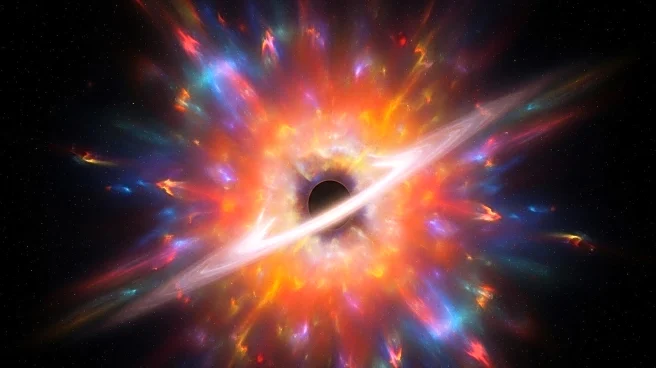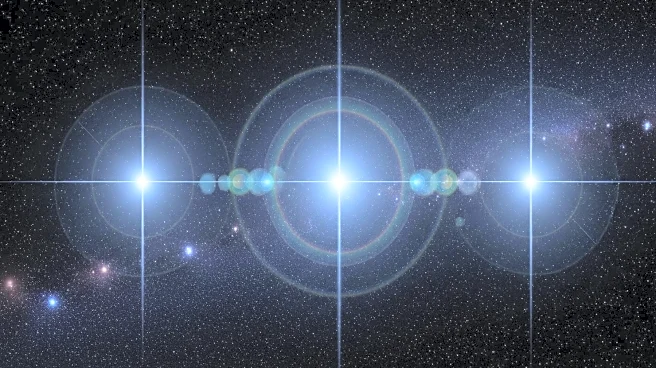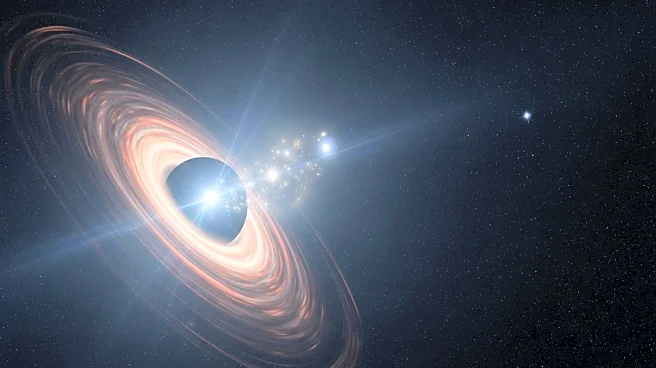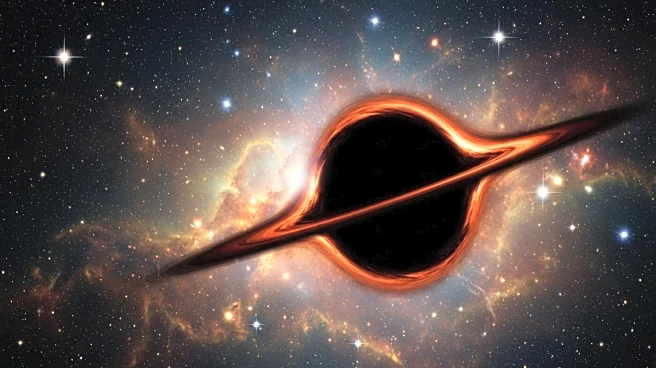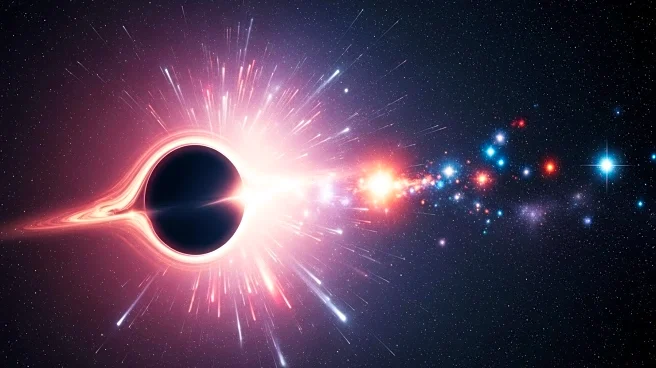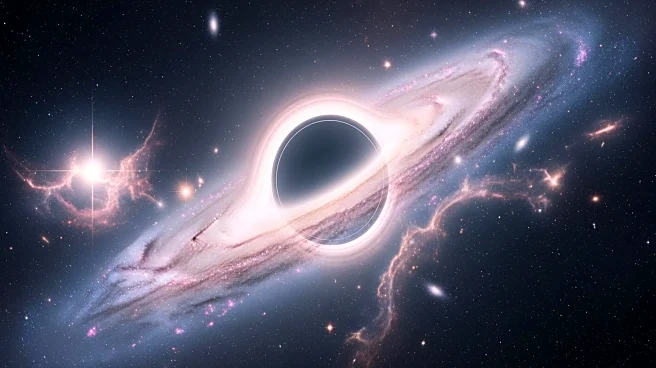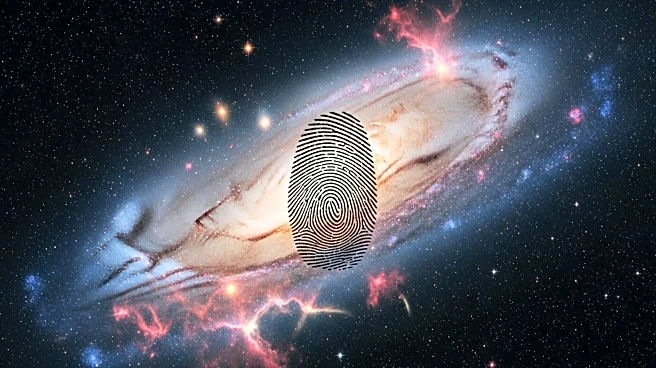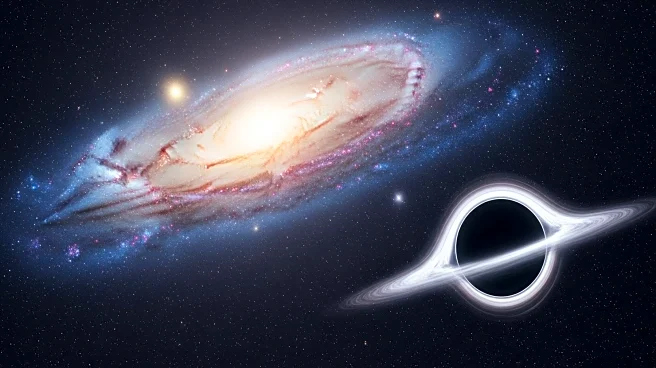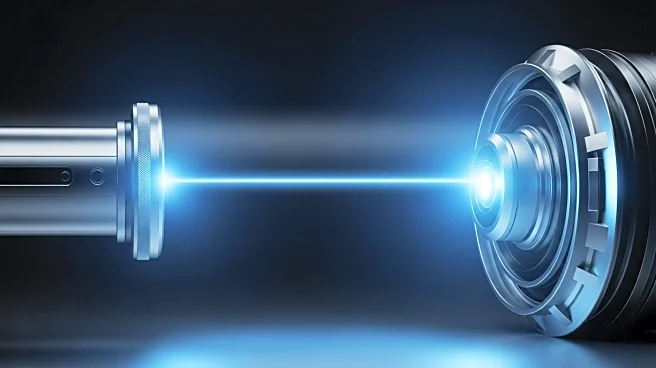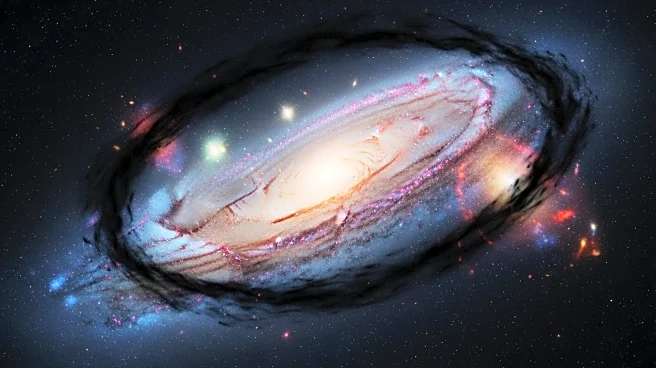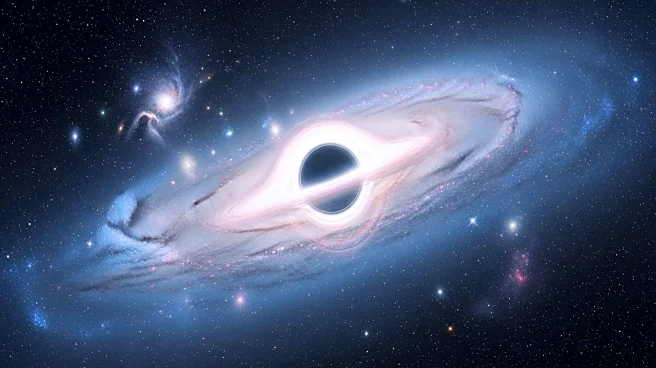What is the story about?
What's Happening?
MIT physicists propose that the highest-energy neutrino detected to date may have originated from the final burst of a primordial black hole. These hypothetical black holes, formed shortly after the Big Bang, could make up most of the dark matter in the universe. The study suggests that a small subpopulation of these black holes is undergoing final explosions, releasing high-energy particles, including neutrinos. This scenario could explain the recent detection of a highly energetic neutrino and provide the first observation of Hawking radiation, indicating that primordial black holes exist and constitute most of dark matter.
Why It's Important?
The study's findings could have significant implications for our understanding of dark matter and the universe's composition. If primordial black holes are confirmed as the source of high-energy neutrinos, it would provide evidence for Hawking radiation and support the hypothesis that these black holes make up most of dark matter. This could lead to new insights into the nature of dark matter, which comprises 85% of the universe's total matter, and potentially revolutionize our understanding of cosmic phenomena.
What's Next?
Further detections of high-energy particles, including neutrinos, are needed to confirm the study's hypothesis. Scientists will continue to investigate the possibility of primordial black holes making up dark matter and explore the implications of Hawking radiation. Additional experiments and observations could provide more evidence and help refine our understanding of these cosmic events.
AI Generated Content
Do you find this article useful?
